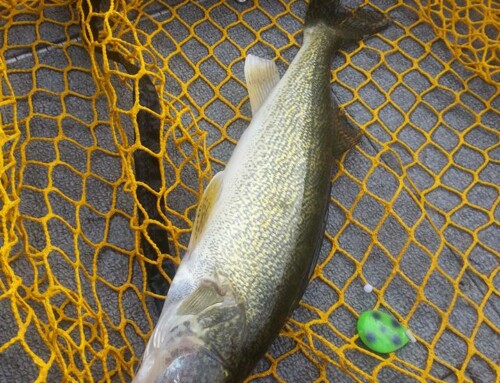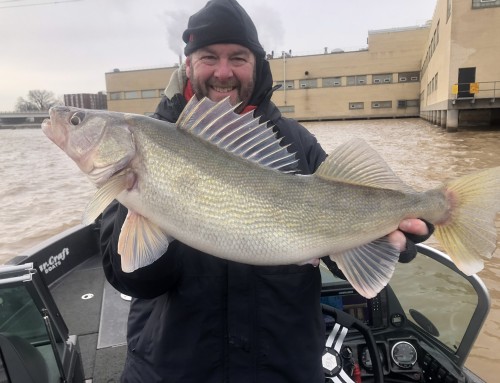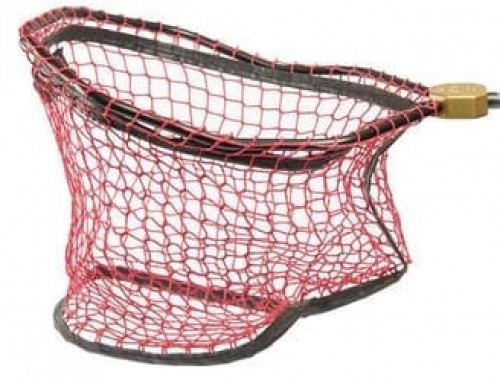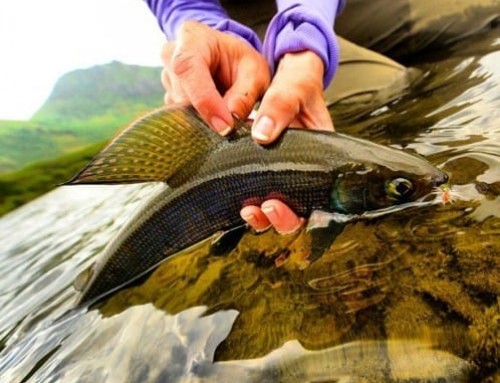As the dog days of August fade into the fall colors of October, some boat owners procrastinate preparing their boats for the upcoming winter. Winterizing your boat is the single most important item a boat owner can do to increase the chance of flawless performance the following Spring.
Preparing for winter is not just getting the motor ready, rather a total boat project. Many times the first major snowfall is the trigger for many die hard anglers in the upper Midwest to get started. Several of these items can be achieved prior to your last outing of the year. However, procrastinating to the last possible moments, leaves some boat owner well behind the old proverbial 8-ball. The time put into preparing your boat for Winter, pays huge dividends at ice out in Spring.
For the Interior
Take some extra time to do an over view of your boat. Clean out all of the rod lockers, and wipe them down and vacuum the lockers out. It is always surprising when you find that box of crawlers tucked in the corner from your last outing. This will prevent those nasty odors later. In addition, this will also give you the opportunity to put away all those misplaced items that accumulated over the season.
Be sure to remove all of your electronic items (where possible) and store them in a climate controlled environment like your basement. Most electronics are not intended to freeze, and this could save you big dollars for replacements next spring by removing them. Hand held GPS and digital cameras are often forgotten. The not so obvious items which need to also be addressed are items such as flares, PFD, fire extinguishers, sun tan lotion and bug spray.
Batteries are also a key item for removal. I like to mark all the batteries as to their location in the boat, to make sure they all get put back in the proper locations later. Batteries should also be stored in a basement or controlled climate to prevent premature failure. These batteries should be charged every 30-45 days while in storage. Follow your manufacture’s recommendations.
For the Key Components
Ultimately, every motor and every boat has a manufacturer recommended checklist, and should be followed to the final detail. Here is a general checklist for outboard motors which can be used as a guide:
- Pressure wash the boat, and remove any debris or marine deposit. Unattended debris will be tougher to remove next year.
- Repair any body damage incurred over the year. Touch up paint as appropriate.
- Pull the prop and check for damage or for fishing line wound under the prop.
- Flush the motor.
- Drain all water.
- Add Mercury Outboards stabilizer to your remaining fuel and run the engine. Adding the chemical and not running the engine prevents the stabilizer from reaching all the components it needs to protect. Some dealers prefer the motor is nearly full of gas, and other prefer the gas tank nearly empty. Check with your marine dealer as to which they prefer.
- Disconnect the fuel line and run the motor until it stops. This will increase the likely hood that all the fuel is burned in the motor.
- Use a fogging agent to lubricate the cylinder walls and pistons.
- Clean and drain the bilge pump. Make sure it is dry.
- Change gear oil. Check to see if there is any water present—If water is present, see your boat dealer ASAP.
- Check the live wells and the plumbing exiting the boat for water. Add a small amount of anti freeze into the live well to prevent burst pipes under the floor boards. That can be a high dollar repair expense.
- Repack the trailer bearings.
- Check the motor(s) for loose fasteners/bolts.
- Check the spark plugs for possible wear and replacement
- Check oil reserves to determine if they need to be topped off
- Store the motor in the down position
- Place fabric softener sheets inside the boat to repel little critters.
Using an Authorized Marine dealer like Wendt’s Marine in Van Dyne, WI can save you thousands of dollars in later repairs. Scott Klein, owner of Wendt’s, says “Outboards have changed. They are not your easy going carb 2-strokes. They are high power, supercharged 4- strokes or computer driven, direct fuel Injection 2-stroke. These engines require a Certified Technician to winterize them. A lot of these engines have electronic fuel pumps and running them out of gas could cost you more in the long run. Fogging in a lot of these engines is a thing of the past. Storage fogging oil overtime turns into an almost honey like liquid and causes the sophisticated direct injectors to stick leaving you with poor performance in the spring, or even engine damage. It may cost a little bit to have a professional winterization done, but in the long run its worth every penny ”
Fall is also the time to get those nagging little repairs done. Waiting until next Spring always results in missed time on the water. Like some boat owners – they delay the repair in Autumn, and end up waiting for their boat at the repair shop the following Spring due to the heavy volume of boats being prepared for the new season and repaired from the previous season at the marine dealers. Don’t miss that walleye run in De Pere, as your boat awaits repairs.





